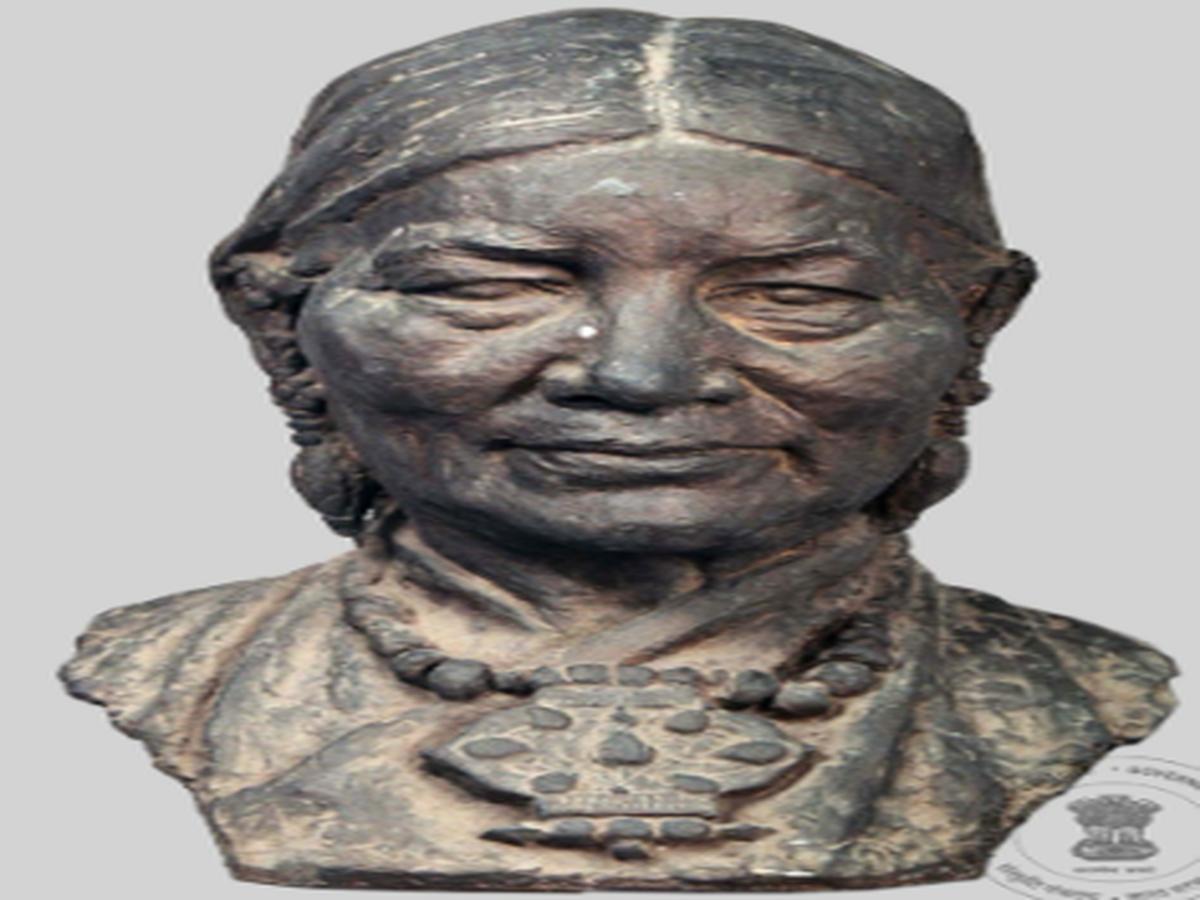State
Tribe Name
Art Type
short description
It is a bronze bust representing a Lepcha female who hits an excellent fine and delicate note in representing the tone of a middle-aged woman of this tribe-a native community of people mostly settled in eastern Himalayan regions of Sikkim, Darjeeling (West Bengal), and parts of eastern Nepal and Bhutan. The Lepchas are regarded as a peaceful clan, rich in the oral tradition, and have strong connections with the natural world. They refer to themselves as Rongkup-the children of the snowy peaks. The bust shows that the woman is presenting her plaited hair in the Lepcha style, which is indeed a very important traditional hairstyle associated with the neatness of feminine identity. The hair is neatly molded with one plait dropping over the shoulder as beauty symbolizes cultural adherence. The ear ornamentation and the presence of a necklace with a central pendant indicate her social status or role in the community since such jewels are mostly worn during festivals, rites, or community gatherings.
Thumbnail

Filter Postion
Left
Filter Background
Off
Theme
Filter Header Image

content
Image

description
It is a bronze bust representing a Lepcha female who hits an excellent fine and delicate note in representing the tone of a middle-aged woman of this tribe-a native community of people mostly settled in eastern Himalayan regions of Sikkim, Darjeeling (West Bengal), and parts of eastern Nepal and Bhutan. The Lepchas are regarded as a peaceful clan, rich in the oral tradition, and have strong connections with the natural world. They refer to themselves as Rongkup-the children of the snowy peaks. The bust shows that the woman is presenting her plaited hair in the Lepcha style, which is indeed a very important traditional hairstyle associated with the neatness of feminine identity. The hair is neatly molded with one plait dropping over the shoulder as beauty symbolizes cultural adherence. The ear ornamentation and the presence of a necklace with a central pendant indicate her social status or role in the community since such jewels are mostly worn during festivals, rites, or community gatherings.
The bronze bust not only shows the real likeness, but also the grace and dignity with which the Lepcha women carry the burden of language, culture, folklore, and even farming practices within the society. This bust is a symbolic celebration of the unique identity of the Lepcha tribe and reflects the much needed value that they have in aesthetics, gender roles, and respect for traditions. Such artistic representations can be rightly considered as heritage-preserving artifacts that help in memory as well as legacy preservation of the Lepcha race for rather distant generations.
The bronze bust not only shows the real likeness, but also the grace and dignity with which the Lepcha women carry the burden of language, culture, folklore, and even farming practices within the society. This bust is a symbolic celebration of the unique identity of the Lepcha tribe and reflects the much needed value that they have in aesthetics, gender roles, and respect for traditions. Such artistic representations can be rightly considered as heritage-preserving artifacts that help in memory as well as legacy preservation of the Lepcha race for rather distant generations.
Image Mode
landscape
promoted
On
Verified
Off
